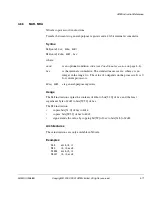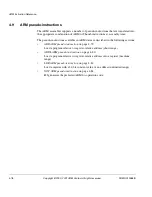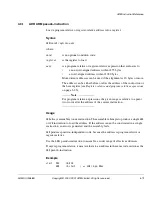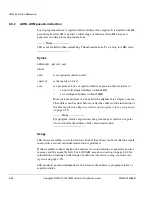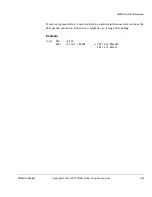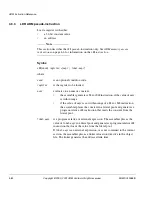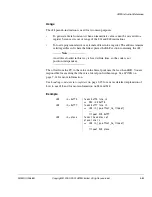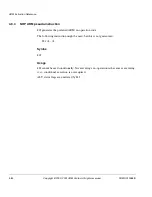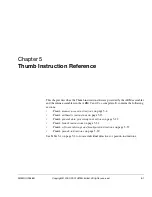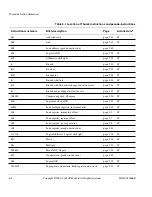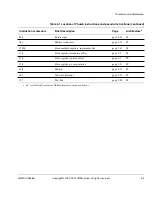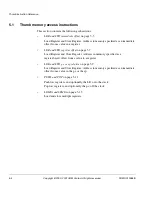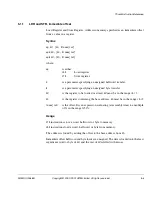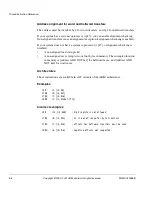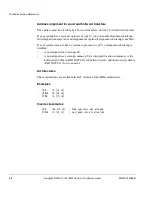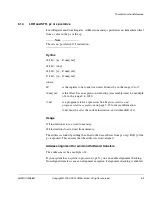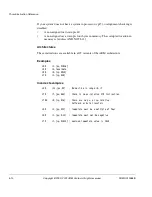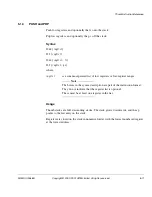
ARM Instruction Reference
4-80
Copyright © 2000, 2001 ARM Limited. All rights reserved.
ARM DUI 0068B
4.9.2
ADRL ARM pseudo-instruction
Load a program-relative or register-relative address into a register. It is similar to the
ADR
pseudo-instruction.
ADRL
can load a wider range of addresses than
ADR
because it
generates two data processing instructions.
Note
ADRL
is not available when assembling Thumb instructions. Use it only in ARM code.
Syntax
ADR{
cond
}L
register
,
expr
where:
cond
is an optional condition code.
register
is the register to load.
expr
is a program-relative or register-relative expression that evaluates to:
•
a non word-aligned address within 64KB
•
a word-aligned address within 256KB.
More distant addresses can be used if the alignment is 16 bytes or more.
The address can be either before or after the address of the instruction or
the base register (see
Register-relative and program-relative expressions
on page 3-23).
Note
For program-relative expressions, the given range is relative to a point
two words after the address of the current instruction.
Usage
ADRL
always assembles to two instructions. Even if the address can be reached in a single
instruction, a second, redundant instruction is produced.
If the assembler cannot construct the address in two instructions, it generates an error
message and the assembly fails. See
LDR ARM pseudo-instruction
on page 4-82 for
information on loading a wider range of addresses (see also
Loading constants into
registers
on page 2-25).
ADRL
produces position-independent code, because the address is program-relative or
register-relative.












